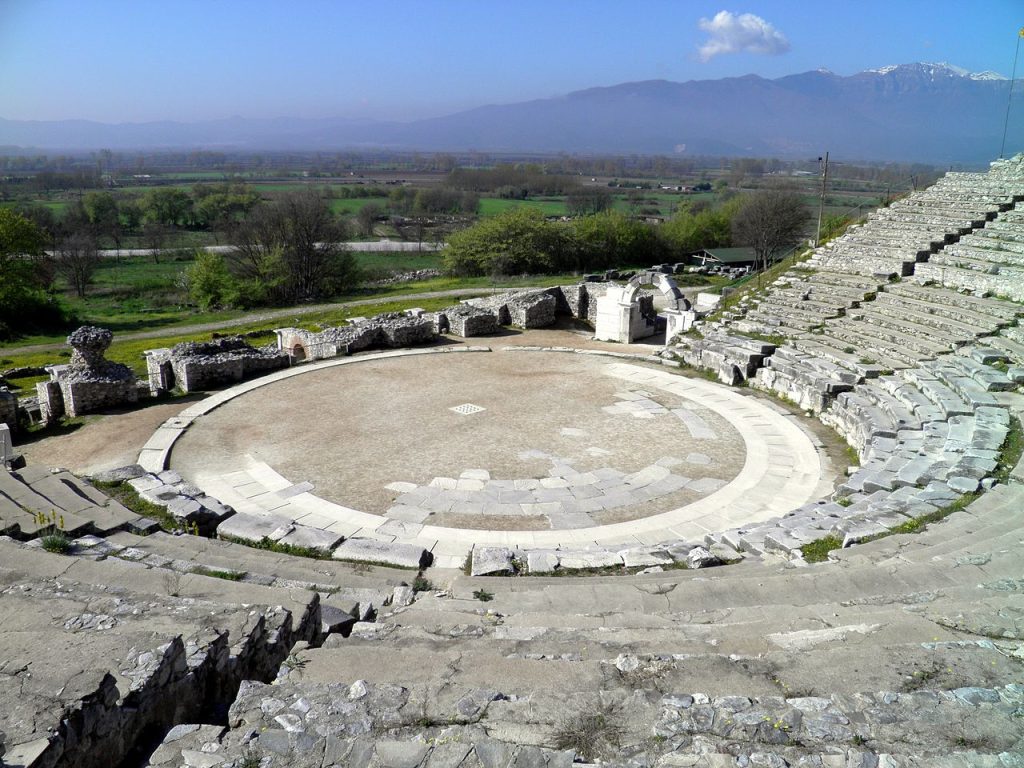
The city of Philippi was first inhabited by Greeks from Thasos about 360 B.C. in a colony named Krinides (Κρηνίδες, “springs”). Philipp I of Macedon, however, soon took control of the area and renamed in Philippi in his own honor (Diod. Sic. 16.3.7.). During this early period a city wall was constructed, much of which remains today. Shortly after the Romans conquered Macedonia in 148 B.C., the Via Egnatia was constructed so as to pass through Philippi on the plain below the early city and its acropolis on Mount Orbelos (today Lekani).
An important confrontation took place in 42 B.C. just to the north and west of the city between two Roman armies led on the one hand by Brutus and Cassius and with Mark Antony and Octavian on the other. When the latter came out victorious, they converted Philippi into a Roman colony, Colonia Victrix Philippensium. With the solidification of Augustus’s power, it was renamed Colonia Iulia Philippensis, then Colonia Augusta Iulia Philippenis in 27 B.C. The Romans followed their normal practice of surveying the area and dividing it into plots (centuriation) for distribution to veteran soldiers and sale to other locals and immigrants.
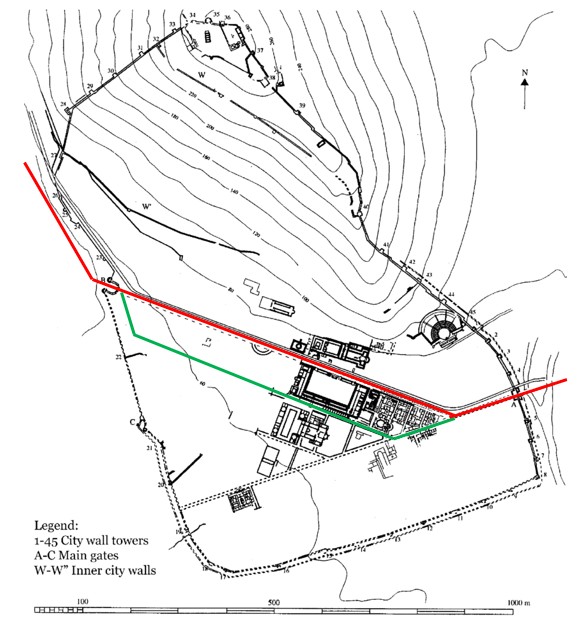
Colored lines added over original
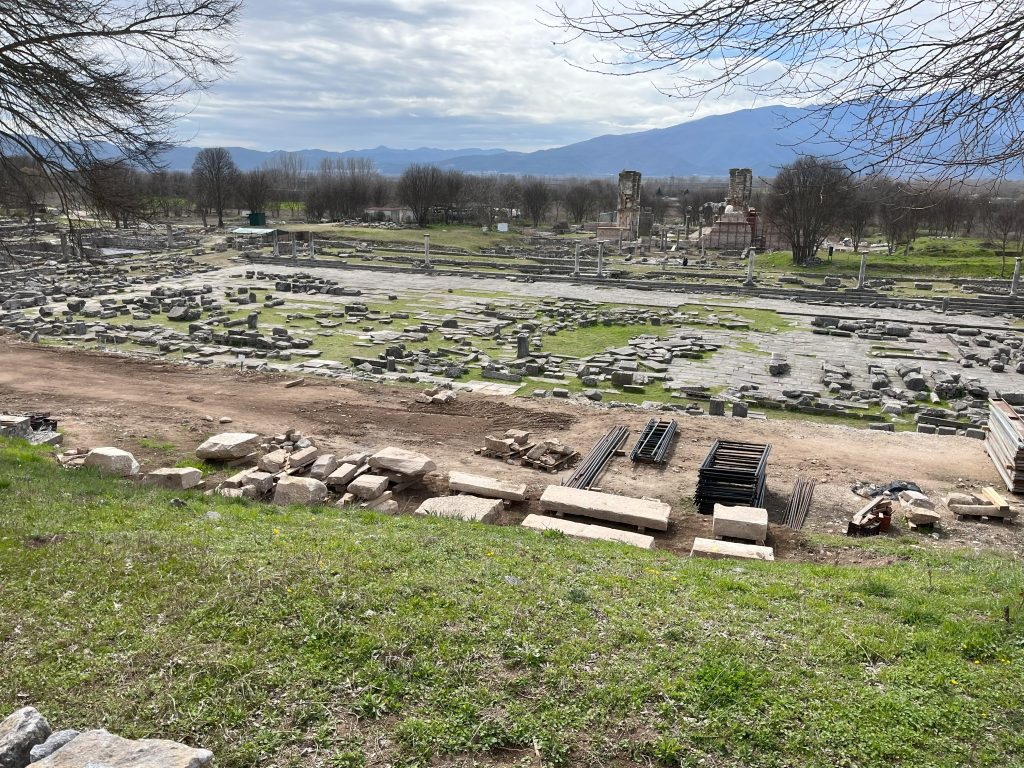
Much of the classical and Hellenistic city was located northeast of the Via Egnatia (VE) between it and the acropolis. This allowed the Romans to build a new forum just to the south of the VE. A second major road (green) split from the VE inside the western Neapolis Gate and curved around the south side of the forum, rejoining the VE about 150 m before it passes out of the eastern or Neapolis Gate. Archaeologists have termed this the “Commercial Road” since part of its purpose was to divert the local business traffic away from the VE.
One of the main survivals from the early Hellenistic city was the theatre2 (1), built into the hillside 150 m or so east of the later Roman forum. It was expanded several times over the following centuries and could hold as many as 4,000 spectators. The site was unfortunately long divided by a modern highway running through the middle just north of and parallel to the Via Egnatia. Although it is no longer in use, it still cause some confusion when viewing aerial photos and plans of the excavation site.
The Roman forum (2) went through a number of reconfigurations. The VE ran from northwest to southeast. It and the Commercial Road formed the two long outer edges of the rectangular forum which was c. 75 x 150 m in size. The Roman curia (12) was located on the shorter northern end, with an imperial cult temple opposite it on the southern end. An early heroon (4) was located a bit further south next to the early Christian Octagonal church complex (5). An mosaic floor inscription was provided by the fourth-century Bishop Porphyrius and refers to this as the Basilica of Paul (Βασιλική Παύλου). A few meters further east is a complex that has been identified as the bishop’s residence (ἐπισκοπεῖον) (6). Several other Christian basilicas from a slightly later period are clearly visible, Basilica A (7) on the hill above the forum and Basilica B (8) south of the forum near a palestra (10) that may date to the Hellenistic period and a commercial forum or macellum (11). Yet another church, Basilica E is located further to the north, near the modern museum. Between the forum and Basilica A is a water cistern (3) that has often been naively identified as “Paul’s Prison.”
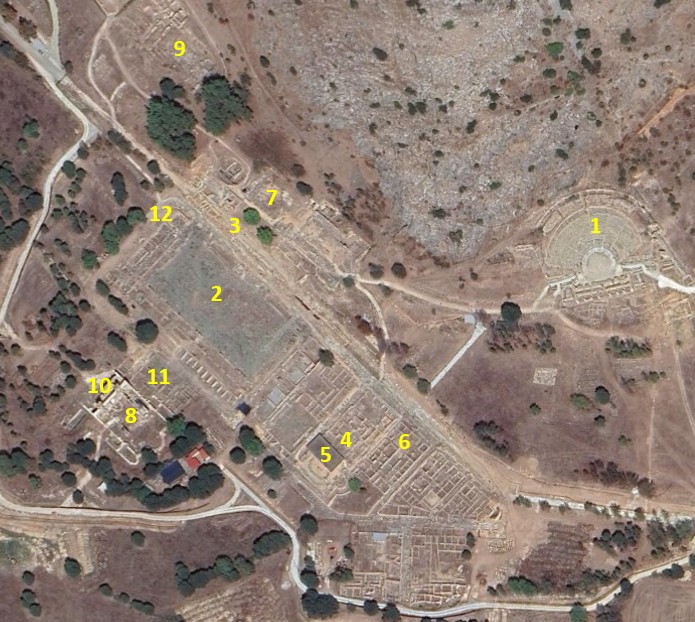
A list of roads that connect to Philippi are listed below.
- The Via Egnatia from Neapolis to Philippi
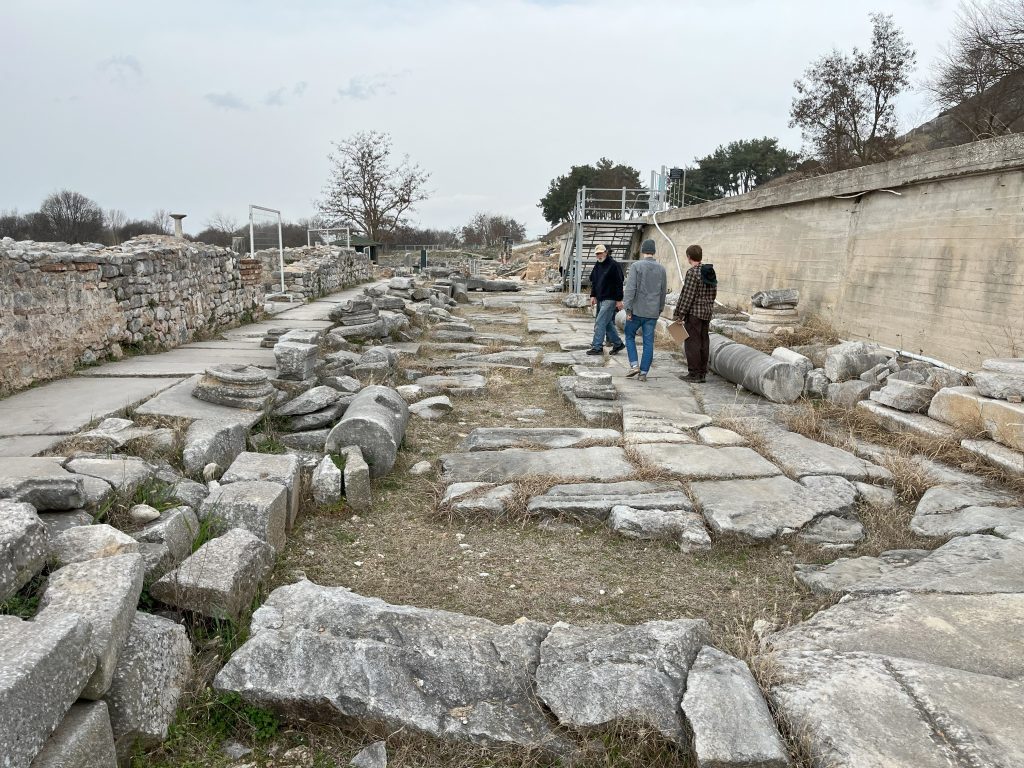
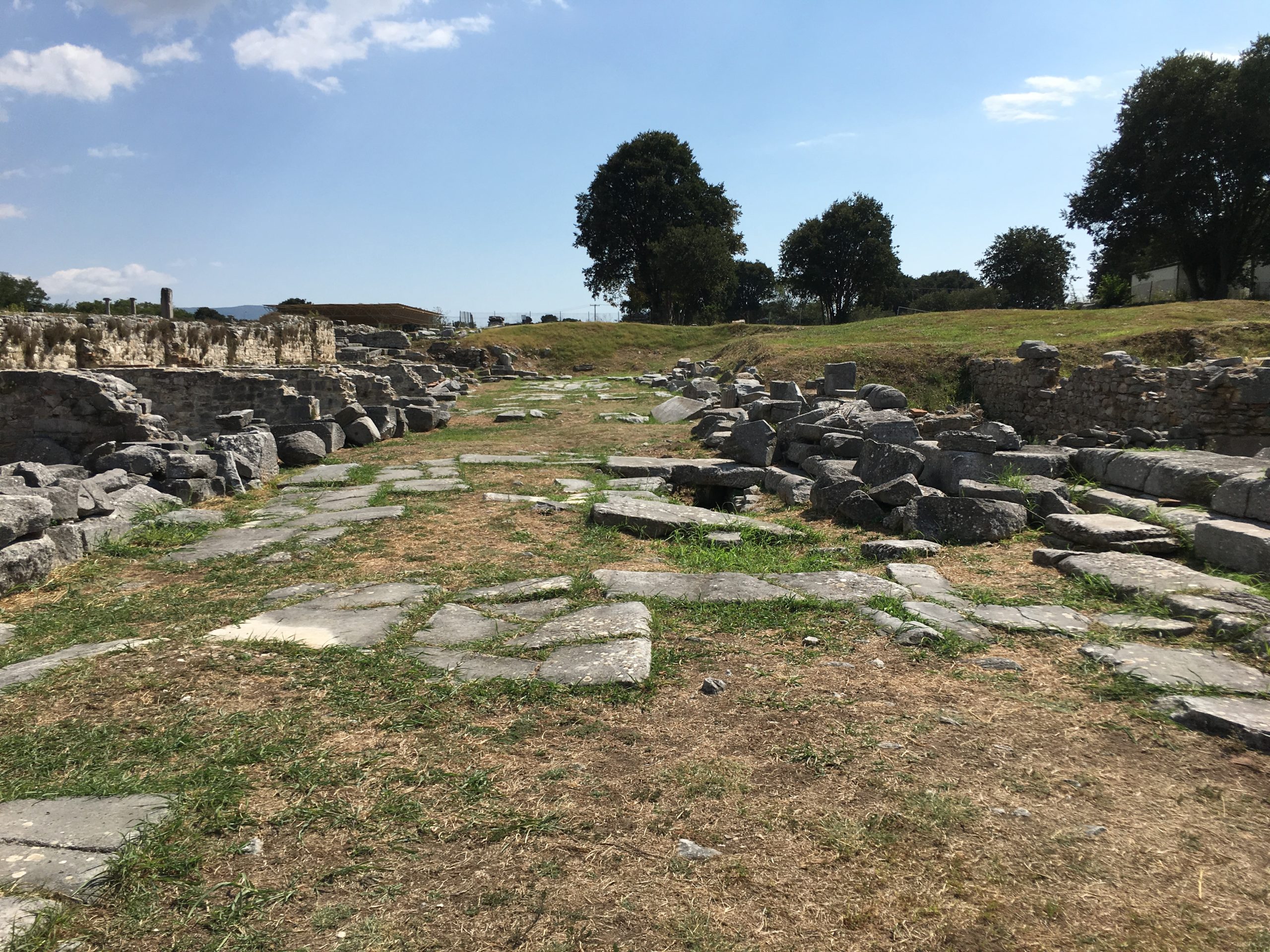
Created by GLT & JTS
Last updated 11/13/2025 JTS
- Kirilov, Chacdar. “The reduction of the fortified city area in late antiquity: some reflections on the end of the ‘antique city’ in the lands of the Eastern Roman Empire.” In Post-Roman Towns, Trade and Settlement in Europe and Byzantium, Vol. 2, 3-24. Edited by Joachim Henning. Berlin, New York: Walter De Gruyter, 2007. 6. ↩︎
- Sève, Michel. “The Forum at Philippi: The Transformation of Public Space from the Establishment of the Colony to the Early Byzantine Period, in Philippi.” In From Colonia Augusta to Communitas Christiana. Edited by Steven J. Friesen, Michalis Lychounas, and Daniel N. Schowalter. Leiden: Brill, 2021, 21. ↩︎